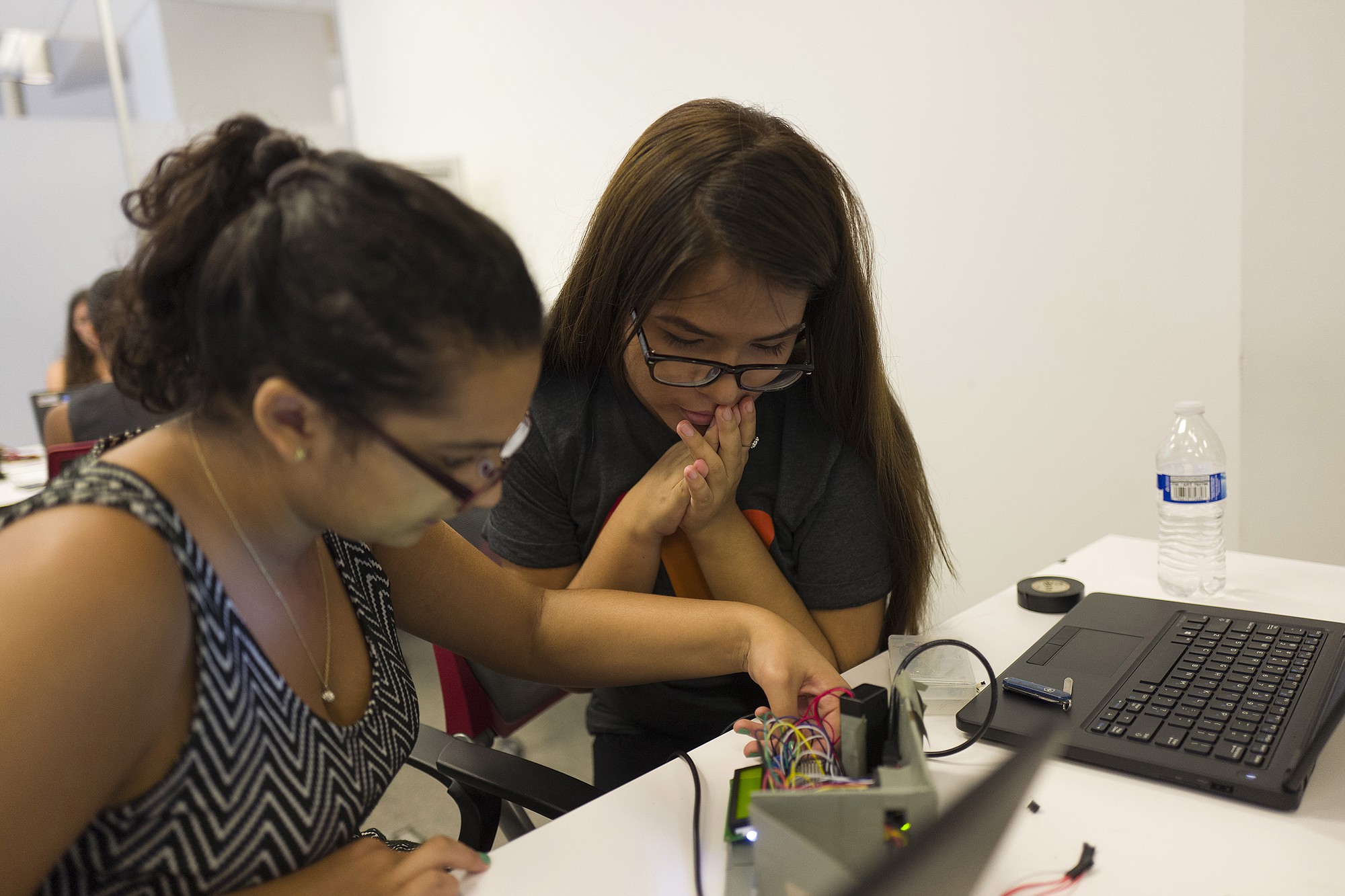WASHINGTON — The group of high school girls sat before a potted plant with wires running down the sides. India Bhalla-Ladd, 15, fiddled with a button on the broadboard, a pegboard for electronic devices. With each press, a different plant type appeared on a black-and-white screen — veggie, flower, and the one she eventually landed on: succulent.
That morning, in a Georgetown University classroom, the toggling device for their project was acting up. They had to troubleshoot a plant.
“We find if you’re missing a semicolon or a comma, the whole thing won’t work,” said India, a junior at National Cathedral School, referring to the code for their plant-managing device, Plantech.
The concept is simple, and genius, really: If your plant needs watering, Plantech will alert you. It works the same way for temperature and sunlight. An LED indicator flashes on, telling you that the plant requires your attention. Eventually, the girls hope it will make watering house plants as simple as sending a text message from work.
“Every person has, at one point, forgotten to water their plant,” said 17-year-old Sara Berrios, a senior at Westfield High School in Chantilly, Va.
The group’s idea sprouted from a seven-week Girls Who Code Summer Immersion Program, a camp that aims to combat stereotypes about computer coders and to encourage high school girls to pursue computer science education. During July and August, about 60 students attended the camp, sponsored by BSA (the Software Alliance), Lockheed Martin and the university. Girls Who Code, a nonprofit, seeks to increase the number of women in technology.
In 1984, women represented 37 percent of computer science graduates, according to Girls Who Code. Today, women make up just 18 percent of those grads.
By 2020, there will be 1.4 million computer specialist job openings, but U.S. universities are only expected to produce enough qualified graduates to fill 29 percent of those openings, according to the U.S. Department of Labor. Girls Who Code aims to provide computer science education to at least a million young women by 2020.
Instead of lazing away the summer with friends or on the couch in front of a television, dozens of girls gathered at Georgetown with a shared goal: Solve an everyday problem with coding.
The girls used computing languages to produce a set of actions that work in concert, and a glimpse into Tom Gutnick’s classroom on a sunny August morning provided strong examples of what that can create.
“I don’t know how this classroom strikes you,” he said. “It’s chaotic. You look around and you see all the great learning going around, and that’s what it’s all about.”
While button pressing occurred at one end of the classroom — part of a video game in which where a kayak navigates streams while cleaning up oil spills — another group worked out kinks on a website that matches people to their ideal pet and guides them to a shelter where they can find it.
Li-Ting Song, 16, and Milena Orbach, 17, were putting the final touches on an app that finds restaurants for people with dietary restrictions. Song, who used to be a vegetarian, said she arrived at the idea when she remembered the hassle of finding places to eat with her friends in middle school.
The girls have a variety of reasons for pursuing coding. Some said it’s the job prospects, for others it’s a love of video games and technology. But many said coding is simply empowering.
Victoria Espinel, the chief executive of sponsor BSA, said the mission struck a personal chord with her as the head of a software advocacy group. The world needs more female coders, Espinel said.



